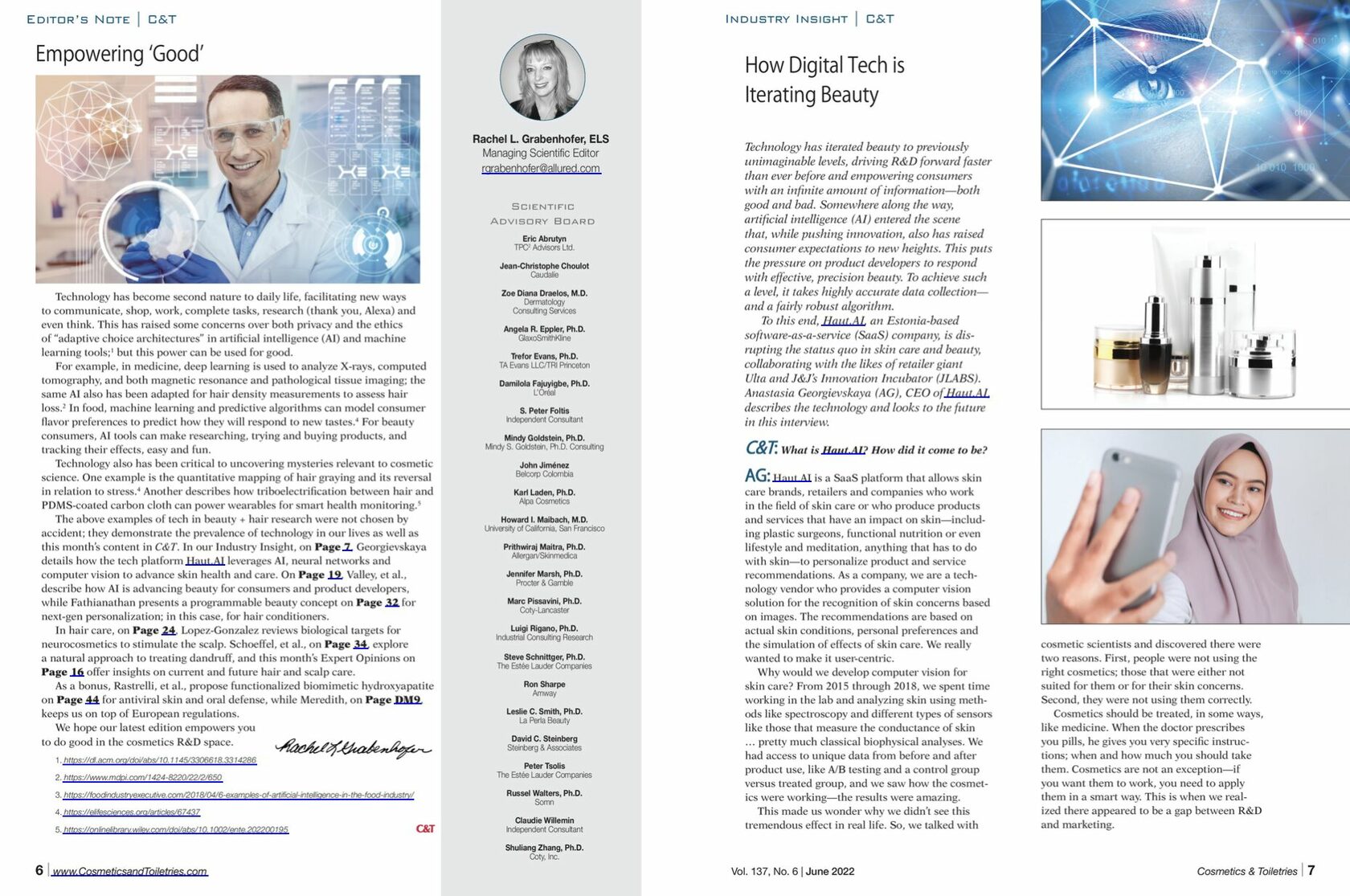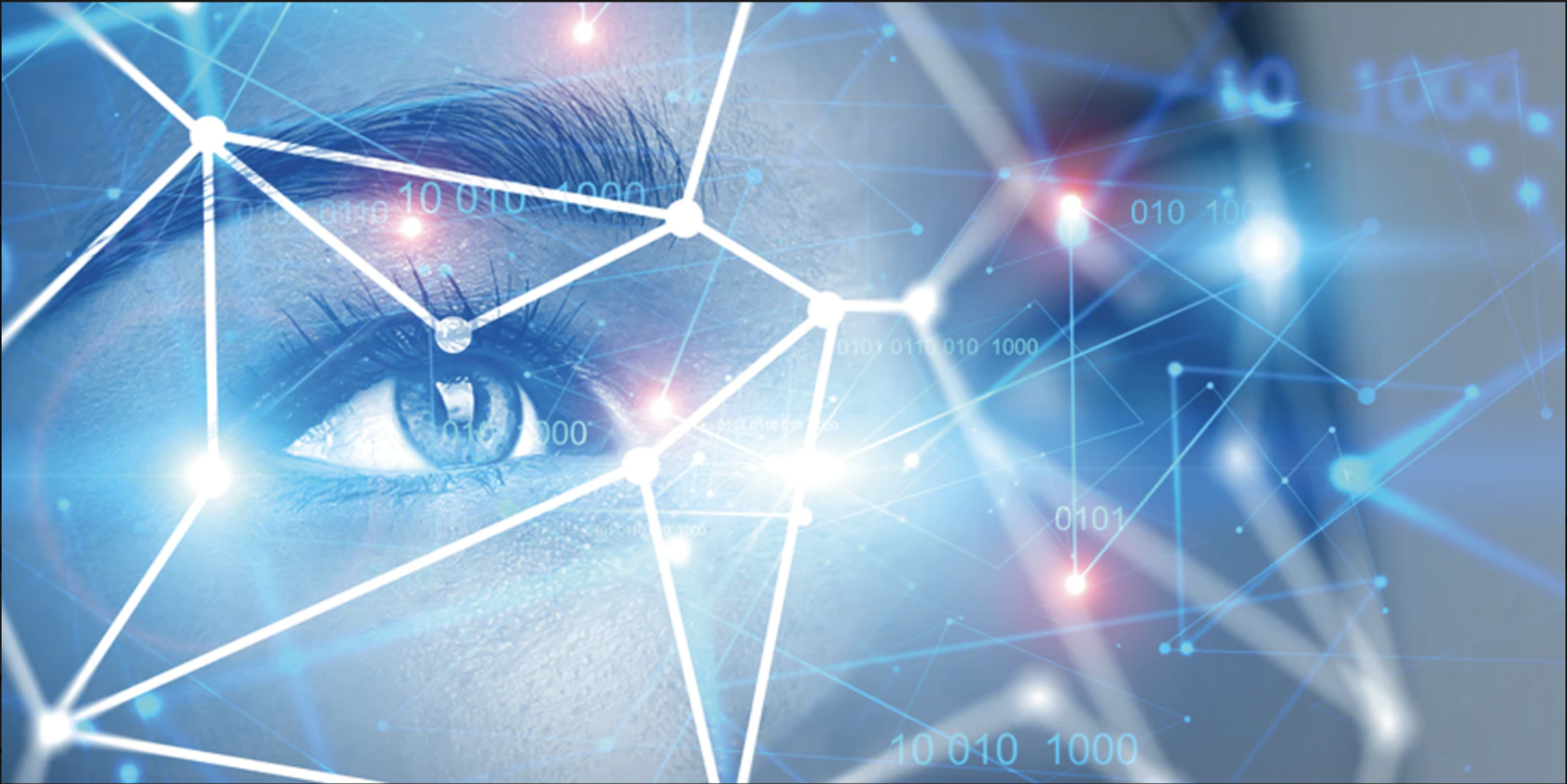Technology has iterated beauty to previously unimaginable levels, driving R&D forward faster than ever before and empowering consumers with an infinite amount of information—both good and bad. Somewhere along the way, artificial intelligence (AI) entered the scene that, while pushing innovation, also has raised consumer expectations to new heights.
This puts the pressure on product developers to respond with effective, precision beauty. To achieve such a level, it takes highly accurate data collection—and a fairly robust algorithm.
Read: How can new technology handle acne management?
Technology and beauty
To this end, Haut.AI, an Estonia-based software-as-a-service (SaaS) company, is disrupting the status quo in skin care and beauty, collaborating with the likes of retailer giant Ulta and J&J’s Innovation Incubator (JLABS). Anastasia Georgievskaya (AG), CEO of Haut.AI, describes the technology and beauty and looks to the future in this interview.

C&T: What is Haut.AI? How did it come to be?
AG: Haut.AI is a SaaS platform that allows skin care brands, retailers and companies who work in the field of skin care or who produce products and services that have an impact on skin—including plastic surgeons, functional nutrition or even lifestyle and meditation, anything that has to do with skin—to personalize product and service recommendations. As a company, we are a technology vendor who provides a computer vision solution for the recognition of skin concerns based on images. The recommendations are based on actual skin conditions, personal preferences and the simulation of effects of skin care. We really wanted to make it user-centric.
Why would we develop computer vision for skin care? From 2015 through 2018, we spent time working in the lab and analyzing skin using methods like spectroscopy and different types of sensors like those that measure the conductance of skin … pretty much classical biophysical analyses. We had access to unique data from before and after product use, like A/B testing and a control group versus treated group, and we saw how the cosmetics were working—the results were amazing.
This made us wonder why we didn’t see this tremendous effect in real life. So, we talked with cosmetic scientists and discovered there were two reasons. First, people were not using the right cosmetics; those that were either not suited for them or for their skin concerns. Second, they were not using them correctly.
Cosmetics should be treated, in some ways, like medicine. When the doctor prescribes you pills, he gives you very specific instructions; when and how much you should take them. Cosmetics are not an exception—if you want them to work, you need to apply them in a smart way. This is when we realized there appeared to be a gap between R&D and marketing.
Research down in the lab is amazing. And you see how it works at different levels; starting from prototyping and in silico tests, and then in tissues, skin explants and humans. That’s exciting—but then you don’t see it in real life. So we decided there should be a tool that could help users track their progress and recommend products using just some simple sort of data. And I think in imaging, a picture’s worth a thousand words. This is why we built Haut.AI and a computer vision technology that accurately tracks skin conditions.
Read more in the June issue of Cosmetics and Toiletries






